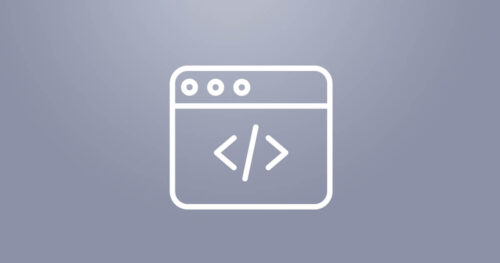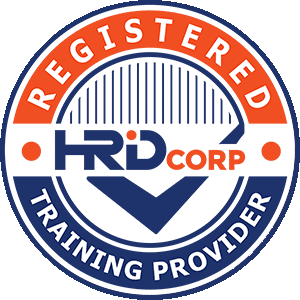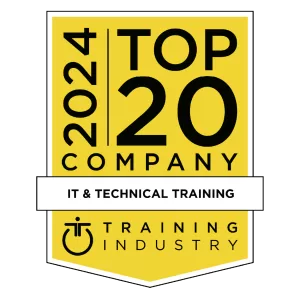This Oracle Solaris 11 Performance Management training course introduces you to performance tuning principles. Oracle Solaris 11 Performance Management training course helps you understand monitor utilities and use tuning tools for the Oracle Solaris 11 Operating System.
-
The Transition to Oracle Solaris 11 training and certification course will give you a detailed overview of the transition to Oracle Solaris 11 training builds on your system administration experience with Oracle Solaris 10.
-
Oracle VM training is meant for systems administrators, as well as data center managers. The training is about virtualization technology in particular. Students understand how to use Oracle VM Server for x86, as well as Oracle VM Manager for building virtualization platform. You gain proficiency in installing and configuring Oracle VM Server for x86. The course makes candidates capable of using simple, as well as high-level cloning to develop virtual machines.
Participants also learn how to administer the lifecycle of virtual machines. They become proficient in preparing network interfaces and virtual disks. In addition, students gain knowledge about concepts like virtual machine administration, storage and network configuration, and repository and pool creation.
-
Oracle VM Server for x86: Implementation Ed 2 training course enables you how to enhance cloud effectiveness with rapid deployment of cloud resources and applications. During the class, you will gain how to administer, redistribute, troubleshoot and protect Oracle VM resources to ensure seamless and continuous access of your applications.
-
Developing Web Applications with JavaScript, HTML5, and CSS
Develop front-end web application using JavaScript, HTML5 and CSS. Course starts with the coverage of web application fundamental concepts, JavaScript language syntax, construction user interfaces using HTML5 and CSS, building application logic using JavaScript, and eventually progresses to advanced topics such as using JavaScript to interact with server-side components, such as WebServices and WebSockets.
-
This Java Design Patterns training reviews common patterns specific to Java SDK & EE development. Lab exercises teach you to identify, apply and re-factor these patterns into code, using a NetBeans or Eclipse IDE and the GlassFish Application Server v3.
This Java Patterns course reviews common and emerging patterns specific to Java SDK and EE development. You’ll learn the depth and evolution of pattern-based techniques in Java, with particular emphasis on Java EE 6 conventions.
Learn To:
- Dinstinguish between Java EE 5 and Java EE 6 pattern-based features.
- Implement relevant patterns in each tier of the Java EE environment.
- Re-factor code to improve inter-tier communications.
- Relate pattern-based development to an implementation architecture.
- Apply object-oriented pronciples and design guidelines.
- Implement well-known patterns to Java-specific code problems.
Lab Exercises
The lab exercises show you how to identify, apply and re-factor selected patterns into code, using a NetBeans or Eclipse IDE and the GlassFish Application Server v3. You’ll also learn a subset of UML notation to expedite communicating through design instead of code.
Java Design Patterns
In design patterns, the responsibility of each component is identified by role. The conventions of design pattern documentation make it easier for development teams to communicate their programming intentions and provide a reference point for the entire Java development community.
Java-Based Frameworks
The Java language and popular Java-based frameworks incorporate more proven development practices into their programming interfaces with each major release. These practices, referred to as design patterns, document well-known names, code implementation and re-factoring techniques, and the risks and trade-offs associated with using them.
-
This Architect Enterprise Applications with Java EE training teaches you to develop architectures for enterprise Java applications using the Java Platform, Enterprise Edition (Java EE) technology. Understand Java EE and relevant technologies.
This Architect Enterprise Applications with Java EE training teaches you how to develop robust architectures for enterprise Java applications. Learn how to use Java Platform, Enterprise Edition (Java EE) technology.
Learn How To:
- Define the Enterprise Architect’s roles, responsibilities and deliverables.
- Identify non-functional requirements (NFRs) and describe common problems and solutions.
- Translate business requirements into an architecture.
- Weigh choices in architecting the client, web, business, integration and data tiers.
- Apply various evaluation criteria to choosing architectural elements and patterns, tools, servers and frameworks.
Benefits to You
By enrolling in this course, you’ll understand how Enterprise Java applications developed using the architecture as a guideline can accommodate rapid change and growth. Expert Oracle University instructors will help you explore the technical context of the Java EE and relevant technologies.
Strategies to Create Application Blueprints
You’ll also learn the strategies needed to create application blueprints that work well when implementing Java EE technologies. These strategies include effective decision-making through the use of non-functional qualities (such as scalability and flexibility), Java EE technology blueprints and design patterns.
-
The Java EE 7: Back-End Server Application Development training teaches you how to build and deploy enterprise applications that comply with Java Platform, Enterprise Edition 7 Full Profile. Learn to develop applications with the following technologies: Enterprise JavaBeans (EJB), Java Persistence API (JPA), JDBC, Java Transaction API (JTA), Contexts and Dependency Injection (CDI), Java Message Service (JMS), Bean Validation, Batch API, Timer services, Java EE Concurrency and more.
Learn To:
- Use Java EE 7 technologies to create, read, update and delete database records using both JDBC and JPA technologies.
- Create a flexible component model using EJB and CDI technology.
- Create SOAP-based and XML web services.
- Develop the business and integration tiers of an enterprise application.
- Understand how those components responsible for: interacting with other systems through web services and message queues.
- Become proficient with database access and manipulation using transactions.
- Provide timer, concurrency and batch services.
- Develop expertise using Java Enterprise Edition 7, the latest version of the Java platform for development of enterprise applications.
Benefits to You
When you walk away from this course, you will have developed the knowledge and skills to read and write messages to systems that may or may not be developed using Java with Java Message Service create batch services to process thousands of jobs in parallel. This interactive, hands-on training is an excellent follow-up course to the Java EE 7: Front-end Application Development training.
-
The Developing Applications for the Java EE 7 Platform training teaches you how to build and deploy enterprise applications that comply with Java Platform, Enterprise Edition 7.
The technologies presented in this course include annotations, Enterprise JavaBeans (EJB), Java Persistence API (JPA), Java Transaction API (JTA), Servlets, JavaServer Pages(JSPs), JavaServer Faces (JSF), Contexts and Dependency Injection (CDI), JAX-RS RESTful and SOAP Web Services, the Java API for WebSocket, Java Message Service API (JMS), Bean Validation, Batch API, Timer services, and Java EE Concurrency.
-
The Developing Applications with Java EE 6 on WebLogic Server 12c course teaches you the skills you need to successfully build and deploy enterprise applications. You’ll explore applications that comply with the Java Platform, Enterprise Edition 6 Web Profile.
Learn To:
- Create mobile web applications.
- Create JSF facelet pages.
- Develop web profile applications.
- Assemble a web application and deploy it into an application server (Java EE platform runtime environment).
- Use CDI.
- Update a database with JPA.
- Perform bean validation.
-
The Java EE 7: Front-end Web Application Development training teaches you how to build and deploy enterprise applications that comply with Java Platform, Enterprise Edition 7 Web Profile. The technologies presented in this course include annotations, Session Enterprise JavaBeans (EJB-Lite), Java Persistence API (JPA), servlets, JavaServer Pages(JSPs), Contexts and Dependency Injection (CDI), JAX-RS RESTful web services, the Java API for WebSocket and more.
This Java EE 7: Front-end Web Application Development training helps you explore building and deploying enterprise applications that comply with the Java Platform, Enterprise Edition 7 Web Profile. Expert Oracle University instructors will help you explore annotations, Session Enterprise JavaBeans (EJB-Lite), Java Persistence API (JPA), servlets, JavaServer Pages(JSPs), Contexts and Dependency Injection (CDI), JAX-RS RESTful web services, the Java API for WebSocket and the Java API for JSON processing.
Learn To:
- Develop web-based interfaces for both desktop and mobile devices.
- Assemble an application.
- Build Java applications.
- Deploy an application into an application server (Java EE platform runtime environment).
Benefits to You
By taking this course, you’ll gain hands-on experience building Java EE web applications. You will get the chance to create web-based user interfaces using HTML5 and JavaScript along with JSPs and servlets. Web-based user interfaces will use AJAX to communicate with RESTful web services you create; data will persist using JPA and optimistic locking.
Participate in Hands-On Labs
By learning through hands-on exercises via structured labs, you’ll get a chance to explore EJB-Lite session bean components, which can be used with container-managed transactions. You’ll perform lab exercises using the NetBeans IDE and WebLogic Server.







